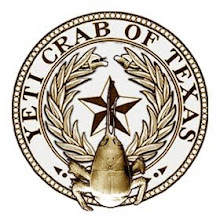Guys...
Ten years ago, on this very day, the
yeti crab was discovered. How do I love the
yeti crab? Let me count the ways. Here are ten pictures of excellent tributes to this magnificent animal, interspersed with ten facts about the wooly arthropod. Also, the rest of the week I hereby decree will be [Crab Week] in honor of
Kiwa hirsuta. I love you,
yeti crab. Never stop being you.
Its pereiopods (aka legs and claws) are covered in silky blond-white setae (bristles).
The setae contain filamentous bacteria, which it may use to detoxify poisonous minerals from the water emitted by the hydrothermal vents where it lives.
Or possibly it just eats the bacteria.
Although it is a squat lobster, don't call
K. hirsuta a "furry lobster" because being a squat lobster actually makes it more of a crab, rather than a lobster.
Males seem to prefer warmer water and egg-carrying females and juveniles prefer the coldest.
Speaking of gender, there may be some confusion on the part of the namers. Its discoverers named the genus Kiwa after "the goddess of the shellfish in the Polynesian mythology". But in fact, Kiwa is a male guardian of the sea.
Anyway, back to the bacteria, the
yeti crab does this cyclical rhythmic motion thing with its claws, that people think may increase the flow of methane, the bacterial food, towards the bacteria, which helps it grow. So it's called a gardener for this reason. Yes, that's right. It's got
arm-gardens.
Deep-sea hydrothermal vents (where these crustaceans live) were only first discovered in the late 1970s.
K.hirsuta is blind; the setae helps it find food and mates.
It is believed that eating a
yeti crab would taste like rotten eggs.


















No comments:
Post a Comment